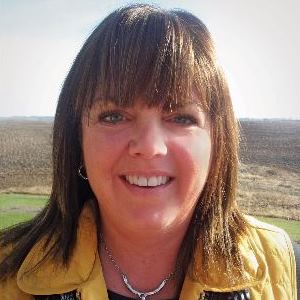Our Quest for 150,000 SCC

 |
Julie Maurer
Newton, Wis.
Family-owned and -operated Soaring Eagle Dairy milks 1,100 cows and grows the majority of the herd’s feed on 1,800 acres.
Maintaining a somatic cell count (SCC) below 150,000 is the goal at Soaring Eagle Dairy. There are years that we have met that goal, and there are other years that temperature extremes will challenge us.
We try to combat E. coli-related issues associated with hot, humid weather by hyper-immunizing cows in advance of the issues and throughout the summer months.
In addition, Wisconsin’s cold winters can cause some teat-end health issues, which we address by switching from our normal iodine-based post-dip to a high emollient or high exfoliation dip.
By being proactive with these health protocols, we find that we rarely have a cow with a "hot" case of mastitis that doesn’t respond to treatment.
Our parlor prep procedure has recently changed. We have always done a dip/strip/dip followed by a wipe/flip towel/wipe routine on our cows. After observing teat scrubbers in action on a neighboring farm, we decided to give them a try.
We have been extremely pleased with how well they stimulate the cows—milk-flow rates have increased, and unit-on times have decreased. We feel we need to get through an entire year with them, however, before determining our satisfaction level with regard to milk quality.
Ask folks their opinion on milk quality bonuses and the responses will probably run the gamut. We do pay a bonus based on SCC to our milkers. It has been our theory that since we are getting paid more for milk produced with a lower SCC, it makes sense to share these bonuses with those who can have a significant impact.
In the end, we truly believe that it makes our employees care about milk quality. At every employee meeting, we review how we are doing along with going in depth on a milk-quality-related topic such as unit alignment, water usage in the parlor, etc.
Our cows lie on beds of sand. About 85% of the sand is recovered using sand settling lanes, and it’s reused after being allowed to drain for three to four weeks. When we are unsure if sand is clean enough to reuse or if we have a higher-than-normal rate of mastitis, we will send in a reclaimed sand sample to test the quality. The deep beds are cleaned out each spring.
Spending time and effort to ensure quality milk is produced means that we have more milk in the tank and fewer sick cows down the road. That time and effort is an investment—just like any other expenditure.
Maurer’s recent prices
Milk
$23.74 (3.6 bf,
3.11 prt)
Cull cows
$77-$88/cwt.
Springing heifers
$1,700+/head
Alfalfa hay (milk cow)
$300/ton
Cottonseed
$425/ton
Ground corn
$179/ton
Soybean meal
$471/ton







